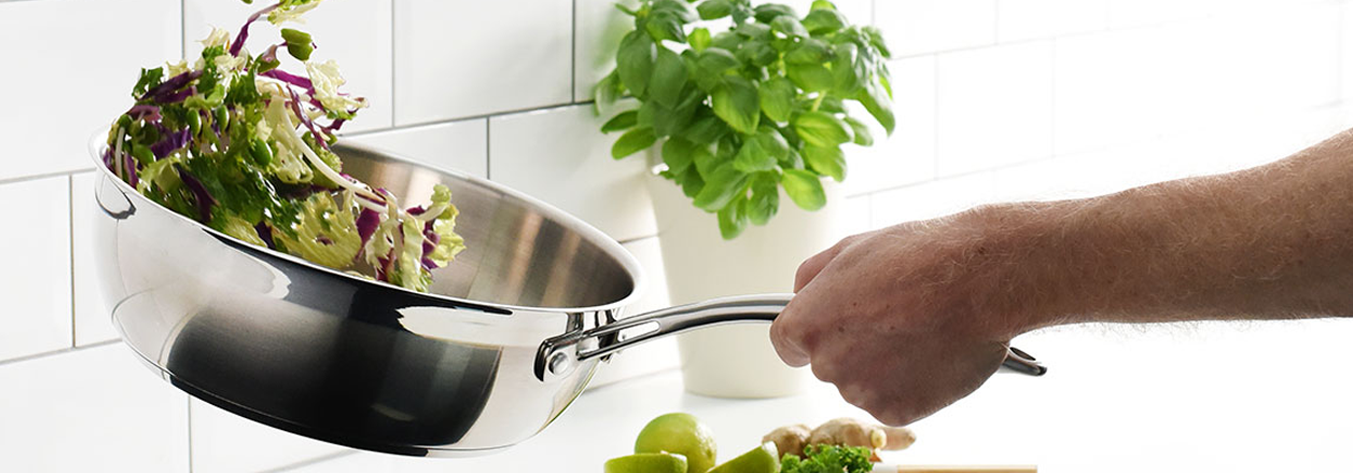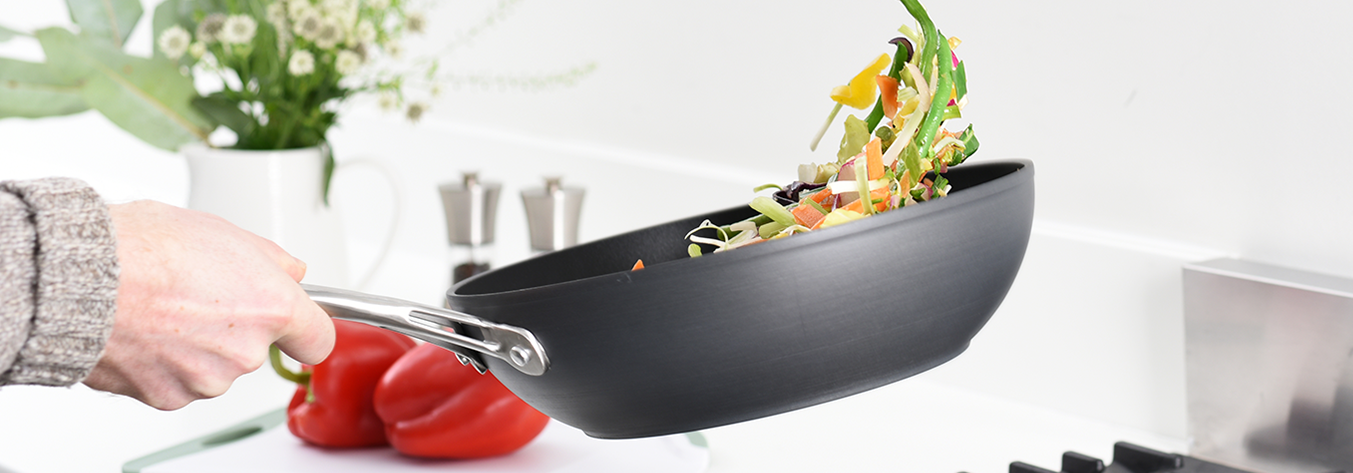When people are looking to buy new cookware many are confronted with the same question – should they buy uncoated stainless steel pans, or ones with a non-stick coating?

There really is no one size fits all answer and much of the decision will come down to personal preference, but here we’re going to talk you through the features of both so that you can decide which is the best type of cookware for you.
Uncoated cookware
One of the very best things about using uncoated stainless steel cookware is its ability to create beautifully browned food during cooking, such as the crust on baked bread and the lines on seared meat. Uncoated pans can be used on a very high heat without fear of damaging a non-stick coating, which is why this type of pan is a popular choice with chefs as food can be cooked quickly whilst still achieving a beautiful golden tone.

Stainless steel pans are great for making deglazed sauces, and with a little care and attention are easy to cook with and keep clean too. It can be tempting to place your hot pan into water immediately after cooking, but we recommend allowing your pan to cool to room temperature before adding any water to prevent the possibility of the pan warping. Once the pan has cooled leave to soak in warp soapy water and any burnt bits will slide off with ease.
Will my food burn and stick?
The simple answer is no! If you do ever find that you are left with a few burnt tidbits left after cooking, you can create delicious glazes with your uncoated cookware by loosening these with broth, water or wine.
Only add your food to the pan once your cookware has already reached optimum temperature to prevent food from sticking, and keep all your ingredients at room temperature before adding to the pan to keep a steady heat. We have all been distracted during cooking only to return to a dish to find it stuck to the bottom of a pan, but don’t panic if this happens to you – all ProCook uncoated pans are dishwasher safe.
Non-stick cookware
Non-stick cookware has a number of attractive benefits such as being easy to clean, requiring little to no fat to cook with and is fantastic at preventing food from sticking. Food will simply slide around the pan making it a great choice for those new to cooking and if you’re making breaded or fried foods, the non-stick surface helps prevent things from crumbling apart.

It’s important to protect the non-stick properties when using this type of cookware, heating the pan gently and ensuring you do not use metal utensils that will scratch the pan’s surface. We recommend using silicone or wood alternatives to prevent damage to the coating, but there’s no need to be afraid of using ProCook non-stick cookware as all our ranges are oven safe up to 260°C, can be used in the dishwasher and are compatible with all hob types.
How do I care for non-stick cookware?
One of the benefits of using non-stick cookware is just how easy it is to keep clean. If you’re hosting guests or are short of time, you can simply give your pans a quick rinse after cooking and wash them up at the end of the evening without needing any extra elbow grease. The pans also offer superb even heat distribution meaning that your food cooks quickly, but take care to cook on a medium heat to keep your pans in the best possible condition.
Uncoated or non-stick cookware?
So should you buy uncoated or non-stick cookware? Well, we think the answer is both. If you like to make dishes that require a lot of heavy mixing then a stainless steel pan may be better suited thanks to its durability and ability to withstand heavy use of hardy utensils, however should you opt for a recipe that requires ingredients to moved around a pan at speed such as a stir fry, a non-stick pan may be preferable.
It will come down to personal preference and the dishes you like to cook, but we recommend popping into your local ProCook store if possible to get a feel for the pans yourself to help aid your decision (you can find your nearest store with our Store Locator).

Please clarify even temperature limit for ProCook Professional Granite Shallow Casserole 28cm
Is it 180 as per the blog or 260 as per the labels and literature with the pan?
Thank you for your comment, Anthony. Since this post was put together in 2019 our Granite range has been updated and we can gladly confirm that our Granite range is also now oven save up to 260°C.